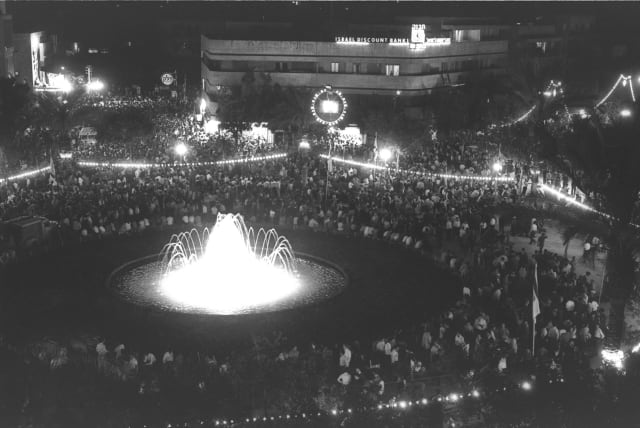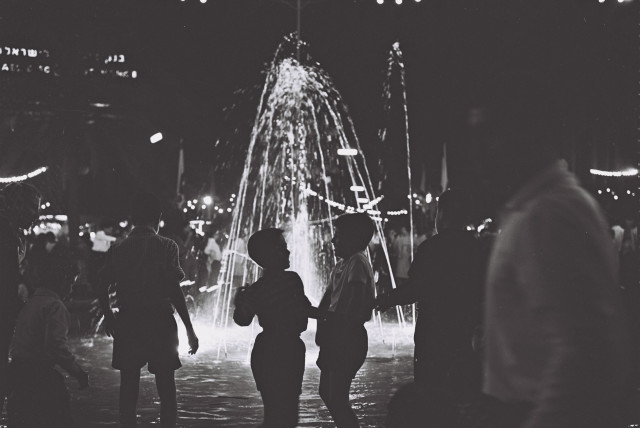A trip back to the birthplace of modern Israel this Independence Day: Tel Aviv

Tel Aviv tour guide Ilan Shchori's annual Independence Day tour shines light on how the city helped give birth to the modern Jewish state.
May 14, 1948, was a mild day in the British mandate of Palestine, according to historical weather records, with temperatures country-wide hovering around the 20°C mark. But in Tel Aviv, hours before the anticipated withdrawal of the British and the planned declaration of the state of Israel, things were heating up. David Ben-Gurion, then chair of the executive committee of the Jewish Agency, had gathered with his advisors at the offices of the Jewish National Fund (JNF), located on Tzvi Herman Shapira Street. They were there to close the final details of the text that would become the country’s Declaration of Independence. They needed to complete this in time for the announcement, scheduled for 4 p.m. in order to finish before the start of the Sabbath and before the British exit.
Ben-Gurion’s secretary, Ze’ev Sherf (who became the nation’s first cabinet secretary and later held several ministerial positions), had sought a building where the declaration could be carried out in secrecy – as it was feared that the British would attempt to stop it; or Egyptian planes would bomb it.
They eventually decided on the house of Meir Dizengoff, Tel Aviv’s first mayor, known today as Independence Hall, located on Tel Aviv’s Rothschild Boulevard.
“Sherf suggested this building to Ben-Gurion and they choose it because you could not see that people were inside the house when you looked at the windows [from the outside] – you didn’t see the lights,” says Ilan Shchori, 70, a tour guide, former political correspondent for Haaretz, and current doctoral candidate in history at the University of Haifa.
“But there were not enough chairs for all the delegates and audience that would attend, so in the morning, they sent people to collect chairs from all the cafes in the area and secretly brought them into the building,” Shchori says.
“And by the time they reached a consensus on the wording of the declaration, it was around 2:30 in the afternoon.” They didn’t have time to wait for the writing of the final draft of the text on the parchment scroll, he explains. “It was Friday and [some] people were religious, so Ben-Gurion quickly ran to the Dizengoff house and made the Declaration of Independence by reading it from a piece of paper. At the end of the declaration, all the participants signed a blank scroll.”
Tel Aviv, and the rebirth of modern Israel
THIS IS just one of the many stories shared on Shchori’s annual Independence Day tour, “From the Establishment of Tel Aviv to the Founding of the State of Israel.”
“Tel Aviv is the city that gave birth to the country,” he says. “As an example, the home in which Meir Dizengoff lived is right next to the plot of land on which, 115 years ago, Akiva Arieh Weiss held the lottery for lots of land in Tel Aviv, and that is the day of the founding of the city.”
Another story Shchori (who also serves as chair of the regional council of Tel Aviv for B’nai B’rith International) shares on this tour is that of the critical role B’nai B’rith played in the establishment of the state of Israel.
“The people of B’nai B’rith in Washington convinced president Harry Truman not to oppose the establishment of the state of Israel after the UN had approved the Partition Plan. Secretary of state George C. Marshall did not support independence... but the people of B’nai B’rith pressured Truman to meet Chaim Weizmann [who would serve as the country’s first president] and because of this meeting, Truman decided to support the establishment of the state.”
The house of Shimon Rokach – considered the founder of the Neve Zedek neighborhood – is also a popular tour stop. “Neve Tzedek became a part of Tel Aviv in 1923, but even earlier than that, in 1890 – two years after B’nai B’rith opened an office in Jerusalem, Rokach established one of the most important branches of B’nai B’rith in Neve Tzedek – Sha’ar Zion,” Shchori says.
SHCHORI WAS born and raised in Tel Aviv and has spent his entire life there. He says researching and chronicling the history of Tel Aviv is his “life’s work,” and he shares the stories of a Tel Aviv past with evident passion. “I grew up in the ‘old North,’ that’s what it was called then – at Gordon 67, on the corner of Shlomo Hamelech. Not far from me was the Tel Aviv Zoo. You could smell the animals. There were animals that escaped. Today there is a park and Gan Ha’ir where the zoo was located,” he says.
According to Shchori, the zoo had elephants, lions, and giraffes among its tenants “...and everything that you could imagine. There were monkeys and some of the monkeys would run away from the zoo and hide at our house. Once a bear ran away and I remember that it hid in a house not far from ours. It was really crazy and we couldn’t leave the house until they caught the bear.”
As the years passed, the city grew, and neighborhoods increasingly encroached upon the zoo, until 1981, when it was moved to its current location as the Safari in Ramat Gan. In the earlier years of the city’s growth, much of the construction was carried out in the then-popular Bauhaus style, brought to the country by German architects.
“Come feel the city, live the city, smell the city,” Shchori says. “It’s wonderful and colorful. Everyone can find their place here...
“One hundred and 20 years ago, when they created the plans for Tel Aviv, the founder of the city, Akiva Arieh Weiss, wrote, ‘We will build a city for Jews, and just as the city of New York represents the gateway to America, our new city will be the gateway to the land of Israel.’ Look at how right he was,” concludes Shchori.
For more information on tours by Ilan Shchori or on his latest book, My Tel Aviv, call 052-7747748 or visit mytelaviv.co.il. Shchori also conducts tours on the songs of Arik Einstein; Abu Kabir Prison; the Carmel, Levinsky, and Bezalel markets, and more.
Jerusalem Post Store
`; document.getElementById("linkPremium").innerHTML = cont; var divWithLink = document.getElementById("premium-link"); if (divWithLink !== null && divWithLink !== 'undefined') { divWithLink.style.border = "solid 1px #cb0f3e"; divWithLink.style.textAlign = "center"; divWithLink.style.marginBottom = "15px"; divWithLink.style.marginTop = "15px"; divWithLink.style.width = "100%"; divWithLink.style.backgroundColor = "#122952"; divWithLink.style.color = "#ffffff"; divWithLink.style.lineHeight = "1.5"; } } (function (v, i) { });

